Sprint 2 Open Toolkits_Reflection
In the third week of class, we learned what OER is and discussed about OER in groups. OER can be regarded as any teaching resource that is publicly shared in digital or other ways, and can be used, adapted, or republished for free according to the conditions of its sharing. Recently, with the popularization of technological devices such as mobile phones, tablets and laptops, digital teaching resources have gradually become one of the tools for teaching innovation in the international community. OER is different from traditional classroom teaching in terms of time, place, number, and identity. It allows learners from all over the world to enjoy the same rich educational resources, improves knowledge dissemination, and provides lifelong learning opportunities.
The more people participate in the creation and modification of OER, the more flexible the utilization of students and teachers will be. OER can provide more mixed teaching applications in traditional classrooms, and can also be made into online courses to provide students with flexible learning options. The ultimate goal is to make learning more effective, make knowledge easy to obtain, and achieve the purpose of sharing educational resources. However, open education is often criticized, referring to the low motivation of students to learn and the completion rate of less than 10%. I think that’s the downside of free courses, usually as long as you pay, the motivation to learn increases. In addition, many courses are taught through the network, and teachers and students are not required to be synchronized in time and space, resulting in poor teaching interaction. Students cannot put forward the problems encountered in the learning process to teachers in a timely and effective manner, and teachers cannot give clear and unambiguous answers in real time.
In the fourth week, each person chose two art assignments and completed them in class. The fist one I chose was The One That Got Away. In this assignment, I needed to call a specified phone number and leave a message saying what I would say to the one that got away. It could be a question or a statement that I just want to tell them something. Although it was a very pure and simple question, it was harder than I thought. I spent the most time was not on calling the phone, but thinking about who to call and what to say. I finally decided to leave a message for my grandma because I was abroad when she passed away. I was busy and didn’t go back to see her until she was cremated, and I felt sorry and regretful about it. Talking about this on the phone, which can be considered private, is more embarrassing than I expected. I felt nervous because I didn’t know who will get this message and what it will be used for. However, when I tried to make a call, I found that the phone number was invalid. So I ended up recording the message on my phone.
This art assignment reminded me of an art work called the “Phone Booth of the Wind”. After the 311 tsunami in Japan in 2011, a phone booth was erected on the seaside of Iwate Prefecture. The old-fashioned roulette phone was not connected to the wire. However, over the years, there are still many residents left after the disaster who have walked into the phone booth and whispered their thoughts to the deceased with the microphone. This phone booth was set up by a local horticulturalist, Sasaki Ge, who originally wanted to express his thoughts to his deceased relatives. After the tsunami, he opened it up for public use, and let the wind take away the words that cannot be conveyed by telephone lines.
The second assignment I chose was Make an Artwork That Hurts. I needed to use a painful experience to create a work of art. Many people have experienced pain like this, such as fingers being pinched in doors or toes being pressed by the feet of desks and chairs. Usually these pains don’t bleed, but it feels more painful than bleeding. Once when I was practicing the piano, the piano cover accidentally fell off and caught all my fingers. Although my fingers were all intact, it felt like they were broken. Because the time for this assignment was relatively short, I did not think too carefully, but quickly drew the first thing that appeared in my mind.
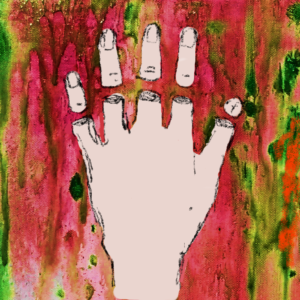
Our class visited Edinburgh Sculpture Workshop in the last day of this sprint. We were asked to participate in three toolkits in groups. The first was playing with mud, where we each created different things and combined them into a weird landscape. The second was to use the tools on the ground to communicate with each other, and we connected all the tools and piece together into a whole. The third was to create with wooden blocks, we drilled holes or put paste in the blocks, and pile the blocks into buildings. The three toolkits were interesting, but we were given a short time that it was difficult to produce a finished product in a limited amount of time. We played and explored the materials like children. However, adults always think too much to be as creative as children.
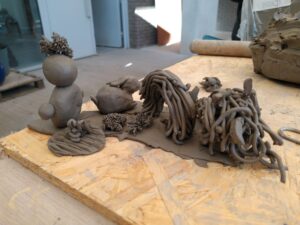
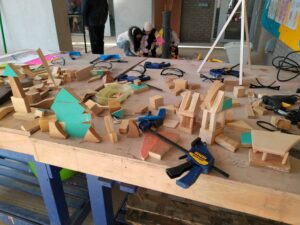
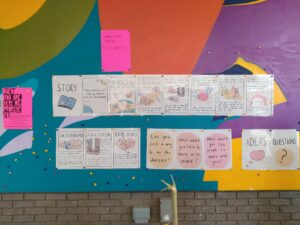
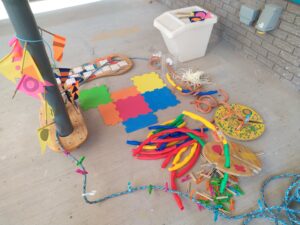
Why does people’s creativity in general decline with age? I think one of the reasons is that the older you get, the more you know. This is of course an advantage most of the time, but it also leads us to ignore signs that go against our established perceptions. We have become too stereotyped. Relatedly, these explanations involve the opposition of two ways of thinking, what computer scientists call “exploration” and “exploitation.” Whenever we encounter a new problem, we adults generally draw on the knowledge we have acquired so far. We try to quickly find a fairly decent solution that is about the same as what was already there. An exploratory mindset, on the other hand, tries something new, and may prompt us to come up with an uncommon idea, an unobvious solution, a new piece of knowledge. But at the same time, it may also mean that we waste a lot of time on crazy assumptions that don’t work at all. Preschoolers and teenagers alike tend to do so, which makes them more creative than adults.




Both of the art assignments completed by the blogger were something I had not known about and I was pleasantly surprised to see new artistic ideas. I think the expression is important and the process of creating artwork is an expression that is admirable in any form. Did the OER you wanted to create match your ideas? The reasons bloggers suggest for the diminished creative power of adults is something I hadn’t thought through. It reminds me of the Buddhist doctrine of the term ‘knowledge block’, where we are always bound by what we have learned. I think the blogger could describe more of the articles or books he has read on the subject.
Thank you for your sharing. I love your work. At the same time, I agree that age may be one of the constraints on people’s imagination, because the older you get, the more things you have to think about.
A good in-depth post. When you discuss motivation and completion rates it’s worth noting that a 10% rate for course such as MOOC with millions of students would mean 100,000 graduates. That’s far more graduates than there are students at even the biggest universities in the world. Completion rates, thus, need to be seen in context. You state that motivation to learn increases when students ‘pay’ for education – where is the evidence for this? Remember that we are always learning, both informally and formally. Most of what/how we learn is not part of a monetised system. Clearly we are motivated to learn without having to feel that learning is a commodity we pay to access (it’s not, learning is a practice that we do irrespective of formal education).
It’s also worth reconsidering what you write about networked learning that is asynchronous. There are lots of ways that asynchronous learning is beneficial, you need to think about what benefits it can offer. Moreover, digital learning doesn’t have to have ‘teachers’ who have the ‘unambiguous’ answers. It’s often more concerned with ‘problem creation’ than problem solving. For example, in Open Networked Learning groups of learners get together to teach themselves about a subject they hold in common. They decide how to share the research required and how to share what they find out.
Your responses to the two assigments you did in class are really fantastic. They are both very considered and heartfelt. While the assignments themselves are just triggers or simple prompts, what you brought to both of them was quite special.
Your reflection towards the end on child vs. adult creativity is well informed; it leads to an excellent analysis of how you felt about playing with toolkits that were primarily designed for children. There’s a lot in here that I can see has clearly informed the direction you’ve gone in with your own Toolkit (Colouring Therapy). Good work here.